|
The OP
Published on 2006-7-18 09:33
Only look at the author
This post is from Power technology
| ||
|
|
||
|
2
Published on 2023-9-13 14:52
Only look at the author
| |
|
|
|
|
|
- 【Posts】18V_3ppm low noise low drift bandgap reference voltage source high accuracy 0.05%
- 【Posts】Question about the internal bandgap reference of GD32F303
- 【Posts】About Bandgap Reference and Zener Reference
- 【Posts】TI Voltage Reference (VREF) Application Design Tips and Tricks
- 【Posts】Please design a pressure sensor conversion circuit
- 【Posts】About Bandgap Reference and Zener Reference
- 【Posts】[ESK32-360 Review] + A/D Conversion and Application
- 【Posts】[In-depth] Design of a low-cost transceiver system for multi-function radar
- 【Download】A low power bandgap reference voltage source for LDO
- 【Download】Design and implementation of a bandgap reference voltage source based on LDO
- 【Download】Design of a bandgap reference voltage source based on LDO regulator
- 【Download】Design of a CMOS bandgap voltage reference with high power supply rejection ratio
- 【Download】Integrating A/D Converters and Other ASICs Volume 256 pages 6.2M Clear bookmark version
- 【Download】Design and implementation of CMOS bandgap reference source and fine-tuning in power chip
- 【Download】AG9321 circuit design schematic diagram USB-C dual port to HDMI with PD3.0 audio and video conversion solution circuit design original diagram
- 【Download】Design of a narrow pulse generation circuit for UWB-TWSR
- 【Design】[Analog circuit] 431 reference voltage source
- 【Design】Demonstration board for evaluating the SRK1001 Adaptive Synchronous Rectification Controller, Flyback Converter with SR MOSFET
- 【Design】Precision Output Current Limit Circuit Reference Design for TPS61088 Boost Converter
- 【Design】DER-917 - InnoSwitch3-CP based on PowiGaN technology, 60W power supply for wall socket with USB Type-C/A port
- 【Design】L6563H and L6599A based 19V-90W adapter with PFC for portable computer applications
- 【Design】STR-NCP3235-EVK: Strata Enabled NCP3235, 23V input, 15A, synchronous buck converter with internal MOSFET
- 【Circuits】Positive 10V reference voltage source circuit diagram with filter
- 【Circuits】Reference voltage divider circuit in AD converter
- 【Circuits】Reference voltage source circuit diagram
- 【Circuits】Positive and negative reference voltage source circuit diagram using op amp
- 【Circuits】Precision reference voltage source circuit
- 【Circuits】Building block reference voltage source circuit diagram 1
- 【Articles】Design of a bandgap reference voltage source for D/A conversion circuit
- 【Articles】Design of a low temperature drift output adjustable bandgap reference voltage source
- 【Articles】Design and simulation of a bandgap reference voltage source
- 【Articles】Design method of bandgap reference voltage source circuit under low voltage supply
- 【Articles】Research on a Low-Temperature Drift CMOS Bandgap Voltage Reference
- 【Articles】Bandgap reference voltage source core circuit
-
18V_3ppm low noise low drift bandgap reference voltage source high accuracy 0.05%
Overview:ThePC40XXisafamilyoflownoise,lowdrift,highprecisionvoltagereferencesProprietarydesigntechniquesareusedtoachieveexcellenttemperaturedrift(3ppm/°C)andhighaccuracy(0Thesefeatures,combinedwithverylownoise,makethePC40XXseriesanidealcho ...
-
Question about the internal bandgap reference of GD32F303
TheADC0channel17ofGD32F303isconnectedtoaninternalbandgapreferenceItriedtoconfigureitforregularscanning,DMAtriggering,andusedtheinternalreferenceoftheother3channels+channel175(+12ThenIdiscoveredamagicalphenomenon:theinputvaluesofotherchannel ...
-
Why is the reference voltage not 1.5V?
ThereferencevoltageofADC0832issetto15V
- Application of basic semiconductor products in active power filters (APF)
- [X-NUCLEO-53L4A3 TOF evaluation board] Trial summary
- What are the main applications of MMS?
- [NXP Rapid IoT Review] NO6. How to modify the rapid lot icon color and other modules
- Are you working hard to participate in e-sports?
- Do you know these advanced uses of embedded C?
- Which DDS chip can produce 1M sawtooth wave?
EEWorld Datasheet Technical Support
-
Huawei's Strategic Department Director Gai Gang: The cumulative installed base of open source Euler operating system exceeds 10 million sets
On November 15, it was reported that the first AI native open source operating system of openEule
-
Whether it is the electrification of automobiles or generative artificial intelligence, power tec
-
Wi-Fi 8 specification is on the way: 2.4/5/6GHz triple-band operation
MediaTek has released a white paper on its official website, outlining some details of the next-g
- Vietnam's chip packaging and testing business is growing, and supply-side fragmentation is splitting the market
- Apple faces class action lawsuit from 40 million UK iCloud users, faces $27.6 billion in claims
- The US asked TSMC to restrict the export of high-end chips, and the Ministry of Commerce responded
- ASML predicts that its revenue in 2030 will exceed 457 billion yuan! Gross profit margin 56-60%
- Qualcomm launches its first RISC-V architecture programmable connectivity module QCC74xM, supporting Wi-Fi 6 and other protocols
- It is reported that memory manufacturers are considering using flux-free bonding for HBM4 to further reduce the gap between layers
- ON Semiconductor CEO Appears at Munich Electronica Show and Launches Treo Platform
- Problems with STM32 and passive buzzer playing sound
- Embedded Tutorial_DSP Technology_DSP Experiment Box Operation Tutorial: 2-28 Building a Lightweight WEB Server Experiment
- OPA847IDBVR op amp domestic replacement
- AG32VF407 Test UART
- [Digi-Key Follow Me Issue 2] Chapter 1: Sharing on receiving the goods
- What model is this infrared receiver? Which model can be used instead? Thank you
- Selling brand new unopened ZYNQ 7Z020 FPGA core board
- The LORA module used in the lithium battery-powered water meter setting can save energy when 100 water meters are installed in one corridor.
- I would like to ask, when a port is set to RX0, is it necessary to set the input and output direction of this port?
- Why is this year so difficult? It’s even more difficult than during the pandemic. I’m 30 and facing unemployment. I’m so confused.
- Ask about the voltage regulator test question
- [Xiaohua HC32F448 Review] About Xiaohua Semiconductor's UART interrupt sending and PRINTF construction and redirection
- 【BIGTREETECH PI development board】 HDMI output test
- 【BIGTREETECH PI development board】+08. Audio test (zmj)
- [Xiaohua HC32F448 Review] +RTC electronic clock
- Canaan K230AI Development Board Review 8--Face 3D Network, Human Key Points, License Plate Recognition, Character Recognition, Object Recognition
- Embedded Engineer AI Challenge Camp (Advanced): Deploy InsightFace algorithm on RV1106 for real-time face recognition of multiple people
- # STM32H7S78-DK Development Kit Three-week Review: Implementation and Analysis of Simple Sound Collection and Storage Using SD Card Reading and Writing
- [STM32H7R/S] Review⑧ nano edge ai studio training a model--Part 1
- [2024 DigiKey Creative Competition] A "fortune-telling" artifact based on Raspberry Pi
- New energy vehicle on-board AC slow charging and maintenance
- Embedded Engineer AI Challenge Camp (Advanced): Deploy InsightFace algorithm on RV1106 for real-time face recognition of multiple people
- I want to make a self-driving car. I saw one on Bilibili that costs 300 yuan. I am hesitant.
- [K230 Embedded AI Development Board Review] + License Plate Recognition and Billing Management
- How to deploy LVGL free graphics library on low-cost ARM platform, based on Allwinner T113-i
- 参会有好礼 | 2024 瑞萨电子MCU/MPU工业技术研讨会
- 深圳站:11月30日(周六)深圳湾万怡酒店
上海站:12月06日(周五)上海喜玛拉雅酒店
奖励设置:现金红包、螺丝刀套装或30元京东卡
- Littelfuse 新品赋能电子产品安全可靠并高效, 10+挑战等你探索!
- Littelfuse 应用赋能星球,覆盖了诸多应用痛点及解决办法,邀请工程师一起探索,解锁更多设计力!
- 了解英飞凌新品AIROC™ CYW5591x 无线MCU,答题赢好礼!
- 无线键盘鼠标套装、智能音箱、登山包、收纳包
- 下载资料赢好礼!看Vicor模块化电源解决方案如何推动创新
- 活动时间:即日起-2024年12月31日
如何参与:点击活动页内您想了解的模块,找到资料下载即可参与抽奖,活动结束后统一发奖!
- 有奖活动|英飞凌高密度双相电源模块为高性能运算平台而生
- 活动时间:即日起-12月15日
活动奖励:蓝牙音箱、氮化镓充电器套装、黑色小背包
- 本周精选下载推荐:电源管理基础Dummies
- 本周小编给大家带来一本超简单、超干货的电子书——《电源管理基础Dummies》!内容深入浅出,排版舒服简洁,分分钟能get到电源管理最核心的知识内容。
EEWorld
subscription
account

EEWorld
service
account

Automotive
development
circle

About Us Customer Service Contact Information Datasheet Sitemap LatestNews
- I want to get started with SMT video quickly, what should I do?
- I want to get started with machine learning algorithms, what should I do?
- For a quick introduction to the basics of FPGA hardware, please give a learning outline
- For the introduction of PCB board, please give a learning outline
- What to learn when you first start using microcontrollers
- How long does it take to get started with MCU development?
- How to quickly get started with machine learning
- How to get started with machine learning
- What to do after getting started with deep learning
- When is deep learning considered to be introductory?


 Room 1530, Zhongguancun MOOC Times Building,
Block B, 18 Zhongguancun Street, Haidian District,
Beijing 100190, China
Tel:(010)82350740
Postcode:100190
Room 1530, Zhongguancun MOOC Times Building,
Block B, 18 Zhongguancun Street, Haidian District,
Beijing 100190, China
Tel:(010)82350740
Postcode:100190
 京公网安备 11010802033920号
京公网安备 11010802033920号


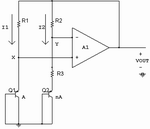

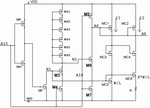
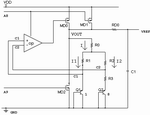
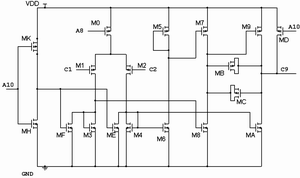
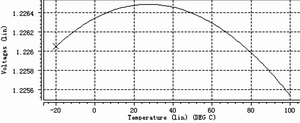
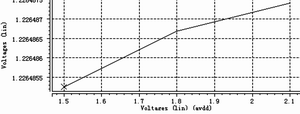
 (12)
(12) 
 提升卡
提升卡 变色卡
变色卡 千斤顶
千斤顶